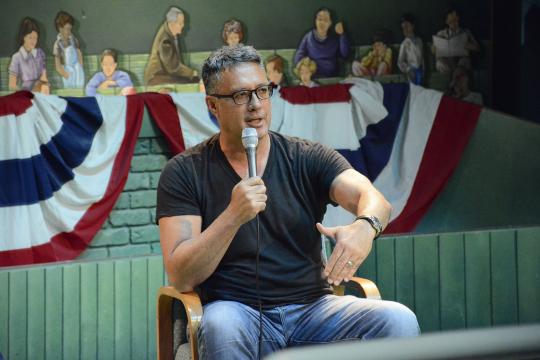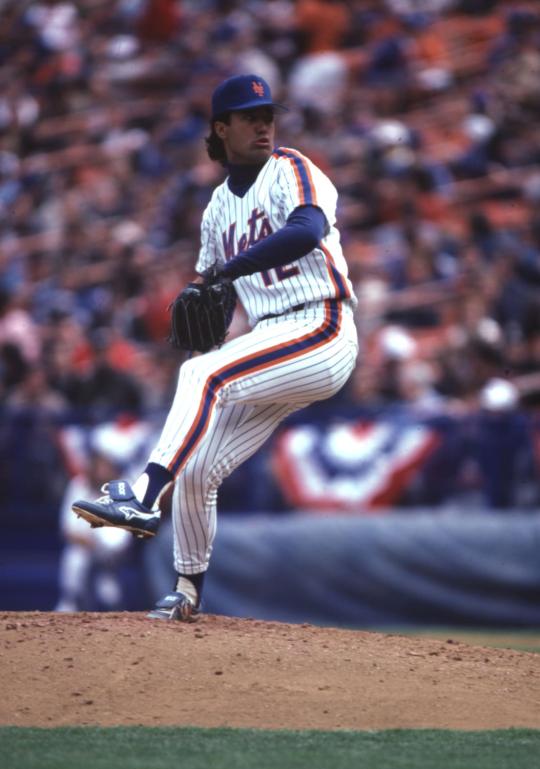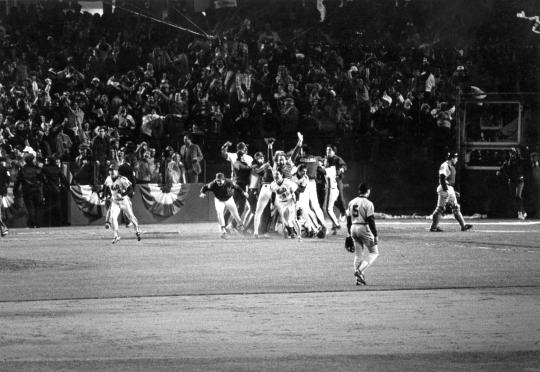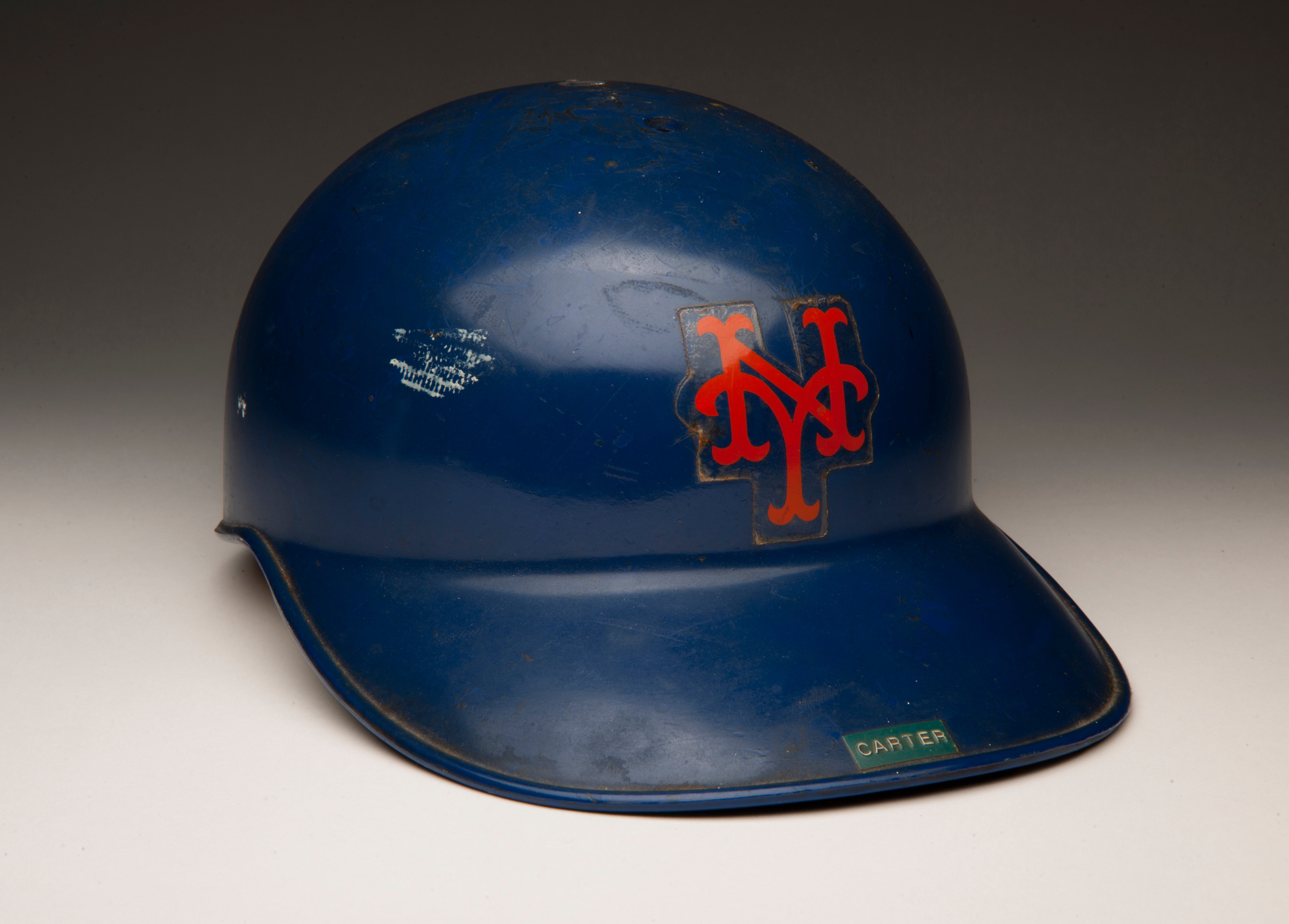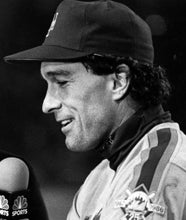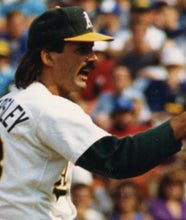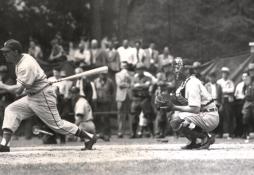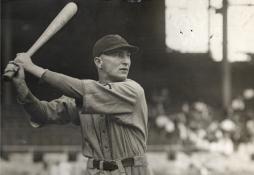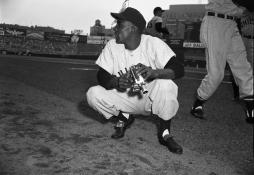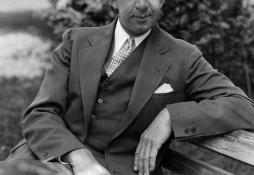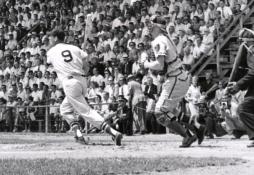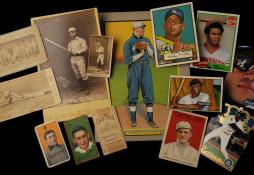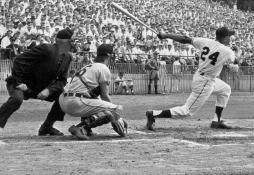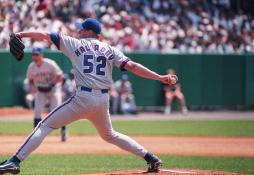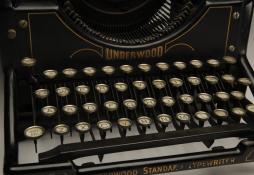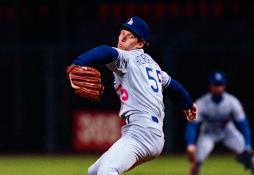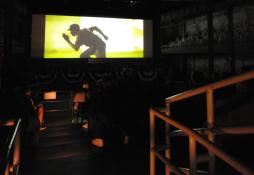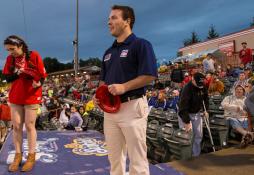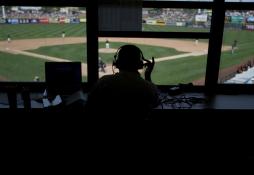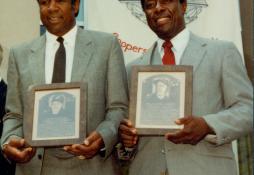- Home
- Our Stories
- Ron Darling remembers
Ron Darling remembers
Former Mets pitcher visits Museum for Authors Series event
Ron Darling was victorious in 136 major league games, but there’s one starting assignment that got away from him, arguably the most important of his career.
Most baseball-playing children at one point have thought about what it’s like to step on the mound for Game 7 of the World Series. Darling lived that fantasy when he took the mound at Shea Stadium in the 1986 World Series, but it didn’t go exactly as planned.
Darling’s new book, released in April and titled, “Game 7, 1986: Failure and Triumph in the Biggest Game of My Life,” written with Daniel Paisner, kicked off the 2016 National Baseball Hall of Fame Authors Series on June 22. The hurler first talked about the book to a large and appreciative crowd inside the Grandstand Theater before a book signing in the Museum’s Library Atrium.
“Working on the book was a cathartic experience for me because I’m talking about I game I didn’t pitch well in,” said the 55-year-old Darling, dressed casually in blue jeans and a black, V-neck t-shirt. “I think what I want people to come away from the book with is that not all sports guys have to write about their greatest triumphs. Those everyone know about. I think I want to take people who read the book inside what it’s like to pitch in a game, but with all the frailties that a professional athlete can feel in the moment.
“And finally, I think that it’s a little bit of an homage to the Red Sox, who were a really good ball club and I don’t want them to be forgotten.”
While it’s probably true that when most people think about the 1986 World Series, they think about Game 6, not realizing the Fall Classic wasn’t decided on the play where the ball trickled through Bill Buckner’s legs. There was a Game 7 to be played. And though the contest in question ultimately came to a happy conclusion for both Darling and his Mets teammates, winning the showdown with the Red Sox, 8-5, his struggles in this most important of moments was something he thought needed further scrutiny.
For the record, the then-26-year-old righty lasted 3 2/3 innings before Mets manager Davey Johnson took him out after having given up six hits, including home runs to Dwight Evans and Rich Gedman, one walk, and three earned runs, leaving the game with his team behind 3-0. Darling’s teammates rallied, though, scoring three runs in both in the sixth and seventh innings, and a pair of runs in the eighth, in another come-from-behind win.
“People ask why would you write about a game you didn’t do particularly well in,?” Darling said. “When the Mets won the World Series that night, no one was more joyous that I was. When we had the parade in front of 3 million people, I was so excited. But two days later I was in my apartment when the crash-and-burn happened, where you’re sitting there and you say, ‘Boy, my entire life I’ve been really good since I was about six years old and every time there was a big game I always came through, what happened?’ The book happened 30 years later.”
According to Darling, the two goals when setting out to write the book was to tell the story of the 1986 season through the prism of one baseball game and to break down that game in play-by-play detail. “I think that after Game 6 there was a feeling amongst people that there was no way the Mets would lose this. I’m sure the Golden State Warriors felt the same thing. But it can happen and it would have happened if we didn’t come back,” Darling said. “As far as the
1986 team, we barely got by the Houston Astros, we barely got by the Boston Red Sox. But that team did win 108 games that year. Yes, we were a blustery team, yes, we were full of ourselves, but when 7:10 rolled around we were ready to go. I think that’s what made us special.”
Thirty years later, looking back on what he and his teammates accomplished, Darling poignantly said, “We used to be the boys of summer but now we’re on to the autumn of our lives.”
And though he had an accomplished 13-year big league playing career with the Mets, Expos and A’s – compiling a 136-116 record, a 3.87 ERA, a National League All-Star selection in 1985, and becoming first Mets pitcher to be awarded the Gold Glove Award in 1989 – he today as recognized by a new generation of fans as one of the game’s best broadcasters. Darling, who attended Yale University before embarking on a professional baseball career, is now an analyst for SNY, TBS and MLB Network.
“I usually get three kind of responses,” Darling said. “The people that saw me play that thank me for 1986; the kids that will come up to me and only know me as an announcer; and people who say you were a heck of a pitcher but you’re a much better broadcaster. I think the longer I do this TV stuff the more it’s easier to say I probably am a better announcer that I was a ballplayer.”
As for his abbreviated time in Cooperstown, Darling being on a short break from his Mets announcing duties, he had nothing but praise for the area.
“I love this place so much,” Darling said. “Every time I come here I always have the same thought: Why am I not living here? I grew up with lakes in New Hampshire, and when you’re a lake person you just love lakes. And then you throw this beautiful Museum in here. I live in New York City, so when you’re at St. Patrick’s Cathedral you feel the same way as you do here: You feel reverent.
Mets Gear
Represent the all-time greats and know your purchase plays a part in preserving baseball history.
Hall of Fame Membership
There is no simpler, and more essential, way to demonstrate your support than to sign on as a Museum Member.
“As for being a former ballplayer to be here, I look at it in a couple different ways,” he added. “One is that I’m a lover of baseball, so the history of it is so great for someone like me. But I think also being a former player I know how hard it is to be great. And I had my moments when I was great. But to be great over a 10-, 15-year career, I can’t even imagine that. So when I come here I can see the guys who could imagine it.”
One guy who could imagine it was Gary Carter, the catcher on 1986 Mets. Carter, who was elected to the Hall of Fame in 2003, passed away at the age of 57 in 2012.
“Gary Carter was one of those guys, of course a Hall of Fame player, but he was also a Hall of Fame person. I think that what separates Gary from just about anyone else I played against or played with,” Darling said. “At some point in the day you wanted to be more like him. We lost him, but boy, what a life he led.
“And the thing about Gary was that before computers, before Sabermetrics, he had it in his brain. The entire National League, he could pull up that knowledge at any time and direct it on a very talented, young pitching staff to heights they probably wouldn’t have reached without him.”
One of the more memorable trips Darling made to Cooperstown was in 2004 when he attended the Induction Weekend of former A’s teammate Dennis Eckersley.
“I remember being at dinner with a lot of Hall of Famers. And I never feel intimidated because I’ve been blessed with such a beautiful life, but I was intimidated that day,” Darling said. “I just tried to stay out of people’s way. It was the most remarkable weekend.”
Bill Francis is a Library Associate at the National Baseball Hall of Fame and Museum

